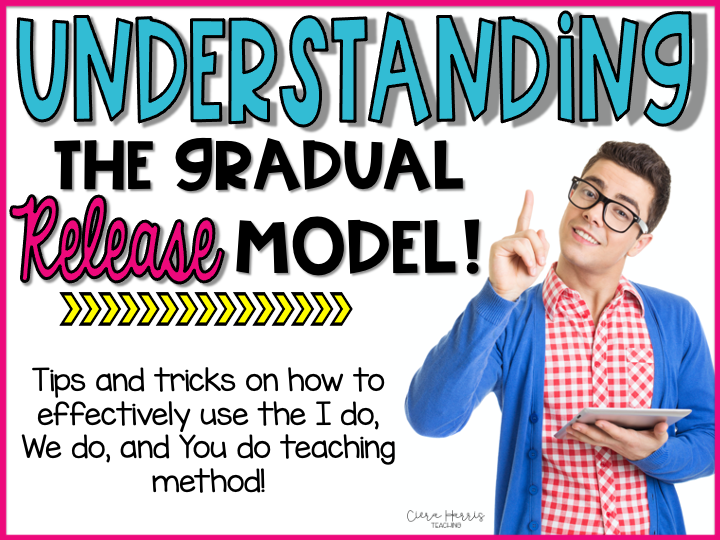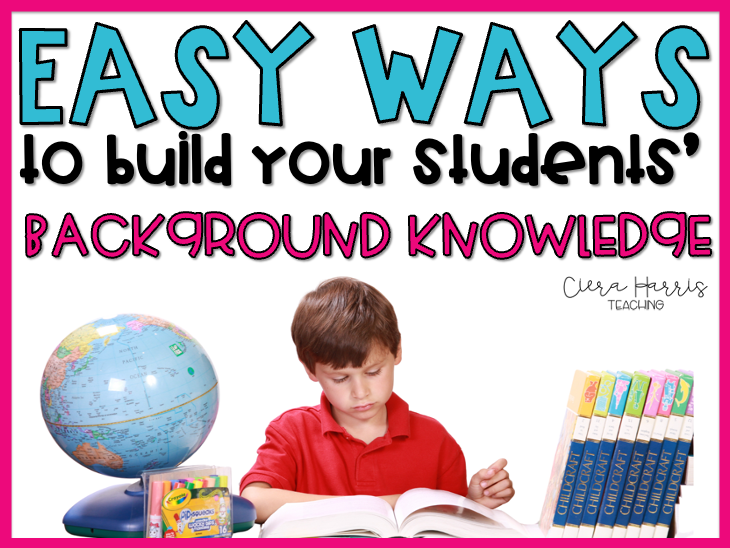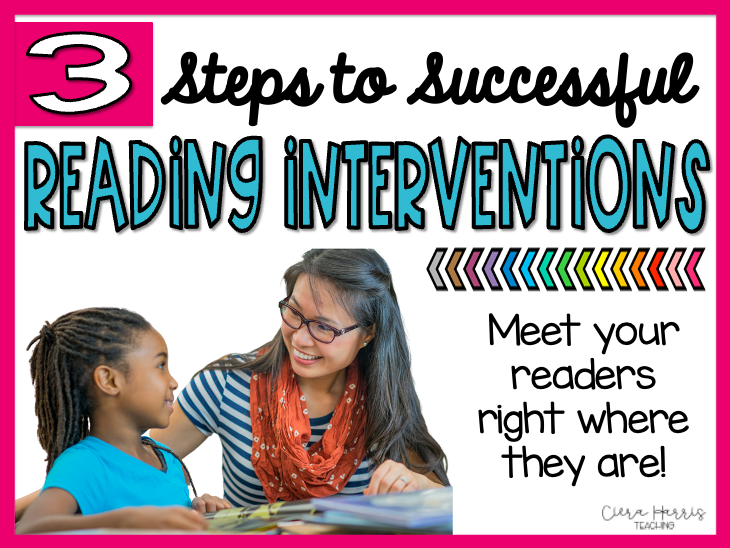Teaching is so much more than standing in front of a group of students and talking, explaining, and reviewing. The way we present the material, also known as lesson structure, has a huge impact on how much students retain during the lesson. The Gradual Release Model, one of my core pillars of reading instruction, allows students to experience a concept from beginning to end through modeling, practice with guidance from peers and teachers, and then independently try on his/her own. This effective lesson structure can truly help your students master skills and concepts on a much faster and deeper level. Let’s break down the Gradual Release Model and see how it works!

Want to watch the video instead? Check it out below! Make sure to subscribe to get updates on all new content!
What is the Gradual Release Model?
It’s a lesson structure that includes 3 or 4 parts – I do, we do, and you do. It can be used in whole group OR small group and in any subject area.
- I do – The teacher introduces the objective, reviews the material, goes over the anchor chart, explains today’s lesson, models activity, and discusses (5 minutes)
- We do – The teacher guides the students through same activity – different variation – asks questions – clarifies thinking (5 minutes)
- We do – The teacher puts the students into groups – completes the same activity, different variation, walks around, and gives support where needed (10 minutes)
- You do – The teacher gives a quick exit ticket to collect data (5 minutes)
Many say this is the ‘old’ way of teaching and I completely disagree and especially for reading instruction. Reading is such a closed experience that if we don’t take time to model and practice the thinking behind reading, students won’t get to the level of reading that they need to be at. Their comprehension will only ever be surface level. Taking time to model my thinking and tailoring the lesson to guide students from my thinking is the best pathway to success.
What are the benefits?
If you really think about it, there’s truly no reason not to use the Gradual Release Model. Why wouldn’t you want to model the concept for your students? And then why wouldn’t you take time to guide them through the same concept and give them the opportunity to try it independently? Unless the teacher is specifically wanting to do more of an  exploratory and self-exploration type of lesson, which does apply to subjects like science and possibly math, then the Gradual Release Model is definitely the route to take. Here’s why!
exploratory and self-exploration type of lesson, which does apply to subjects like science and possibly math, then the Gradual Release Model is definitely the route to take. Here’s why!
- It allows students time to see true modeling (thinking) take place
- It aligns the activities and materials from the beginning to the end of the lesson
- The Gradual Release Model provides structured support with teacher-guided time and small group guided time
- It allows independent time for teachers to gather data
- Also, it keeps the focus on ONE objective at a time
So what do you think? Have you tried the Gradual Release Model before? What do you love or hate about it? I’d love to hear! If you want to save this post for later, just pin the image below!





